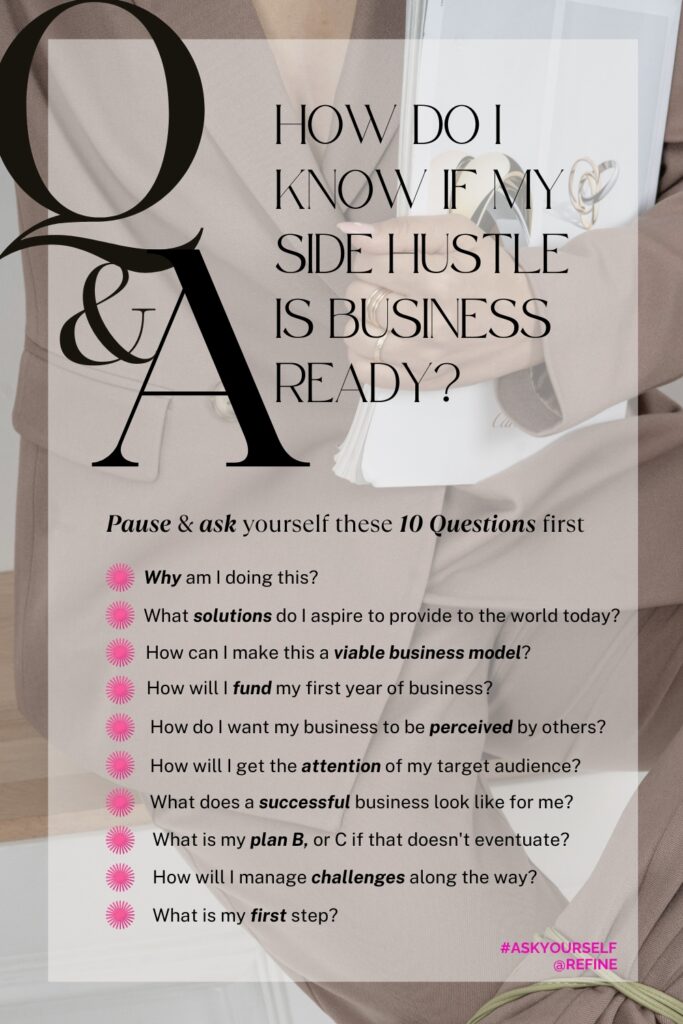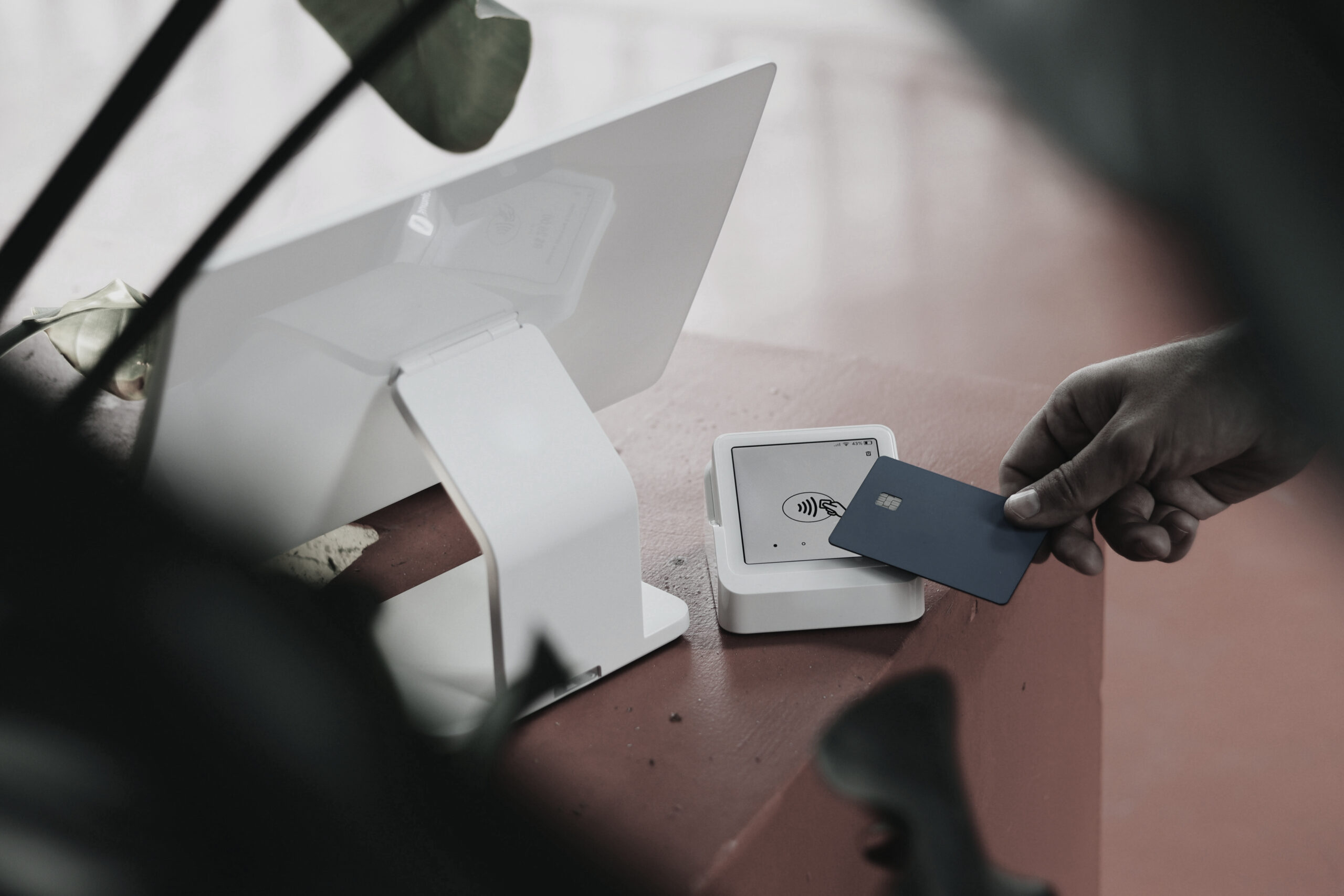ENTREPRENEUR HUB / 24 JANUARY 2024
Beyond the Side Hustle: Is Your Passion Project Business-Ready?

- Have you been working on your side hustle for a while now and feel like you are at a crossroads, unsure which direction to move forward?
- Do you feel like you are onto a good thing here? Feeling like you are ready to take your passion project to the next level?
- Have you been constantly asking yourself when the right time to invest in converting your side hustle into a fully operating business model?
- Do you know if you will be able to generate enough income to sustain your desired lifestyle without the support of your existing job?
If you answered yes to two or more of these questions, then it’s time to start thinking about your next move.
Am I Ready to Invest?
If you’ve been brave enough to start a side hustle, you might have come to the realisation that you can still pursue your passions and interests whilst generating a level of financial stability. Deciding whether to turn your side hustle into a profitable business is a significant move that requires careful consideration. As you continue to engage with your projects, you might ask yourself some questions about how far you can take them. It’s essential to determine whether you’re ready to take the next step and, if so, when it’s the right time to do so. Before you start quitting your day job and going all in, start by evaluating as many factors as possible so that you are well equipped with all the required information required for success before transforming your passion project into a fully operational business entity.

First and foremost you’ll need to consider whether your passion project can generate enough income to sustain your desired lifestyle. You’ll need to examine your financial plan and determine whether your business model can support your lifestyle goals. You should also consider whether your target market is large enough to support your business and whether there is enough demand for your product or service. Additionally, you’ll need to examine your current business model, financial plan, and market research thoroughly. It would be best if you determined whether your passion project is genuinely prepared for the business spotlight. Consider whether you have the resources to handle the increased workload that comes with scaling up. You should also evaluate your competition and determine how you can differentiate yourself in the market.
If you feel confident that you’ll be able to deliver on the finance side of things, then read on. Here, I’ve listed the ten questions you should consider before you get carried away with brand logos and business cards. The more time you can spend getting clear solutions, the easier it will be for you to build the roadmap turning your visions into a business reality.
How do I know if my side hustle is business-ready? 10 Questions to ask yourself.

Q1: Why Am I Doing This?
Take a step back and reflect on what initially fuelled your enthusiasm for starting your side hustle. Understanding the core of your passion unlocks its full potential. Recognise that what began as something small, driven by your desire to pursue something with significance, impact or passion might have untapped potential on a much broader scale than you initially realised. Your passion project could contain hidden opportunities that can develop into something much bigger.
Remove money, profit, sales, or anything financial-related for the moment and ask yourself the following questions:
- What do you value most about your side hustle?
- What aspects (be specific) are you most passionate about?
- What drives you to shift from side hustle to organisation?
- What does the world/community/group need most that you are uniquely able to provide?
Q2: What solutions do I aspire to provide to the world today?
Evaluating the viability and scalability of your passion project is crucial. Are your products or services offering solutions to real-life problems? Can your business model gracefully expand with increasing success? Recognising the growth potential is key to ensuring long-term sustainability.
Q3: how can I make this a viable business model?
If you’re considering turning your side hustle into a profitable business, it’s important to carefully evaluate your readiness. You might be wondering when the “right” time is to transition from a passion project to a complete business entity and how to determine if your venture will generate enough income to support your desired lifestyle. Scaling up your business can be an exciting but intimidating journey, requiring a comprehensive evaluation of your current business model, financial plan, and market research. Determining whether your passion project is truly prepared for the business spotlight is crucial. Start with identifying the feasibility of commercialising your product/service before your go-to-market strategy.
Q4: How will i fund my first year of business?
Successfully navigating the financial landscape of your first year in business requires some level of planning. Begin by establishing a comprehensive budget, detailing all potential expenses, initial outlays and operational costs. Explore diverse funding options, including loans, investors, or grants, aligning them with your financial goals. Consider bootstrapping or leveraging small business loans while being mindful of terms and repayment. Explore potential partnerships, crowdfunding, or government grants for additional support. Develop a financial contingency plan, prioritise early revenue generation, and continuously monitor and adjust your financial strategies based on actual performance and market dynamics. This holistic approach will enhance the financial resilience of your business during its critical initial year. If financial planning is not your strong point, it could be worthwhile investing in external support to put together a feasible plan so that you feel well informed about the decisions you are about to make.
Q5: How do I want my business to be perceived by others?
Once you’ve identified that your business is viable commercially, it’s important to craft a unique brand identity that sets you apart from the competition. This involves defining your values, mission, and unique selling proposition. You can establish a sustainable business with room for growth by laying a strong foundation for your brand.
Take a moment and ask yourself:
- What sets me apart?
- What makes me unique?
- What is my unique selling proposition?
Q6: How will I get the attention of my target audience?
To succeed in the crowded marketplace of today, it’s important to understand the market you are operating in. Market research is key to getting to know your audience and competitors better. Doing so lets you discover how your business idea fits into the existing market landscape. Identifying your niche and understanding consumer needs will help you to connect with your target audience and create a meaningful impact. Start by creating target customer profiles and set a clear path on how you think they would like to be communicated.
Q7: What does a successful business look like for me?
This is a common question that often comes up with other entrepreneurs. Success looks different for each and every one of us. Therefore to achieve success on our own terms, it is essential to map out a strategic roadmap for growth. Start with a vision board on how in visage success to look like in 1, 5 and 10 years, then create your roadmap which should include attainable milestones and objectives that align with your vision. This is not the time to be conservative, think BIG, really big! If resources and funds were in abundance what would your business look like in 20 years?
A well-structured plan acts as a compass, guiding your business through the diverse stages of development. By creating a plan, you can set a clear direction for your business and ensure that you are on track to achieve your goals. Research shows us that the more detailed we get on our goals, the more likely you are to achieve them. Try use SMART goals in your process, this ensures each goal is specific, measurable, achievable, relevant, and time-bound.
Q8: What is my plan B, or C if that doesn’t eventuate?
Options, options, options. To be prepared is to have options; it allows you to face uncertainties in your business, ensuring that your eggs aren’t all in one basket. This approach will help you keep your finger on the pulse and identify key risk factors. Small habits can make all the difference, so try setting aside some time at the end of each month to complete a quick SWOT analysis and use concrete data to support you in identifying any adjustments that will need to be made for the month ahead so that you can feel confident in your future decision-making.
Read our article: From Reflection to Realisation: Achieving Goals with SWOT Analysis
Q9: How will I manage challenges along the way?
Remember, unexpected challenges are part of the journey. There will always be things that are out of your control. What you can control is how you choose to overcome them. Keep your focus on what you can control and rise above any obstacle. Find strategies that allow you to shift your mindset to one of learning and growth, taking responsibility, thinking strategically, and consistently developing yourself. With this determination, you’ll achieve long-term success. Consider daily reflection, journaling, attending self-development workshops, and seeking guidance from a business mentor to guide you on this journey.
Q10: What is MY first step?
Every great journey starts with a single step, what is yours going to be?

Remember that your journey towards success will require patience, persistence, and resilience. Be kind to yourself, and don’t forget to celebrate all the milestones, no matter how big or small. Despite facing obstacles and setbacks, with the right attitude, you can overcome them and turn your dreams into reality. Gently remind yourself of your goals, seek guidance and support, and when in doubt go back to the reason why you started in the first place.






Read the Comments +